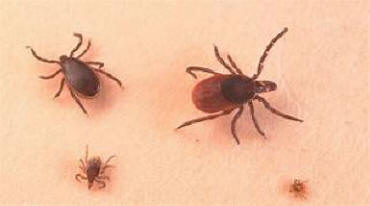Lyme disease treatment
 Lyme
disease Treatment "may include oral or parenteral antimicrobial
regimens." . When neurologic symptoms appear, the pharmacotherapeutic
regimen is modified. There is little evidence to support continuing
antimicrobial therapy in PCLD patients, and treatment recommendations
are inconsistent in this regard. For treating facial palsy that may
arise in the absence of CSF abnormalities, oral doxycycline (100 mg
twice daily for 2 weeks) is helpful; nevertheless, intravenous
ceftriaxone for four weeks is the best treatment for other neurological
symptoms associated with Lyme disease. As previously mentioned,
transmission often requires 24 hours of sustained attachment and
feeding. However, "Nervous System Lyme Disease" that oral therapy with
amoxicillin, cefuroxime axetil, or doxycycline for two to four weeks
will be successful in individuals with infections that do not impact the
central nervous system. On the other hand, meningeal doses of penicillin
or injections of ceftriaxone or cefotaxime typically result in speedier
healing.
Lyme
disease Treatment "may include oral or parenteral antimicrobial
regimens." . When neurologic symptoms appear, the pharmacotherapeutic
regimen is modified. There is little evidence to support continuing
antimicrobial therapy in PCLD patients, and treatment recommendations
are inconsistent in this regard. For treating facial palsy that may
arise in the absence of CSF abnormalities, oral doxycycline (100 mg
twice daily for 2 weeks) is helpful; nevertheless, intravenous
ceftriaxone for four weeks is the best treatment for other neurological
symptoms associated with Lyme disease. As previously mentioned,
transmission often requires 24 hours of sustained attachment and
feeding. However, "Nervous System Lyme Disease" that oral therapy with
amoxicillin, cefuroxime axetil, or doxycycline for two to four weeks
will be successful in individuals with infections that do not impact the
central nervous system. On the other hand, meningeal doses of penicillin
or injections of ceftriaxone or cefotaxime typically result in speedier
healing.
Only very few individuals with parenchymal CNS involvement, or other serious infections, or about 5% of patients who do not respond to oral regimens may require intravenous therapy. Another study by Shapiro, E. D. (2014). reveals that "ates of cure (defined as complete resolution of signs and symptoms shortly after the completion of treatment) have been about 90% with doxycycline, amoxicillin, or cefuroxime axetil." A single 200-mg dosage of doxycycline reduces the chance of acquiring the disease Lyme after an Ixodes scapularis tick bite. Even in endemic locations, there is little chance of disease transmission via tick bites; therefore, routine use of the medicine is not advised, and it should not be administered to children under the age of eight or pregnant women. Furthermore, there is no proof that people with Lyme disease who experience tiredness and arthralgia as treatment-related adverse effects are also chronically infected. Therefore, Long-term antimicrobial drug therapy has considerably more dangers than benefits.
Antibiotic Recommendations for Common Lyme Presentations:
| Presentation | Treatment | Notes |
| Lyme disease prophylaxis | Doxycycline, 200 mg as a single dose. | High-risk bite: tick
is Ixodes species, Lyme endemic area, tick attached for at least
36 hours. Treatment recommended within 72 hours of tick removal. For children, doxycycline, 4.4 mg per kg up to 200 mg. |
| Erythema migrans | Doxycycline, 100 mg twice daily for 10
days or Amoxicillin, 500 mg three times daily for 14 days or Cefuroxime axetil (Ceftin), 500 mg twice daily for 14 days or Azithromycin (Zithromax), 500 mg daily for 7 days. |
Azithromycin only recommended for patients unable to take doxyсу-cline and beta-lactam antibiotics. |
If you have any questions, do not hesitate to contact me via email.
